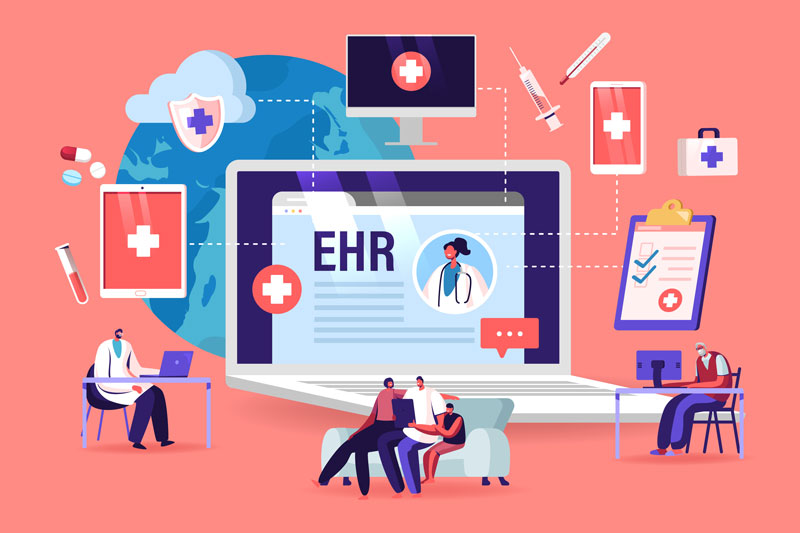This week is National Nurses Week, in which we celebrate the contributions that nurses make in the healthcare system. The theme in 2024 is “Nurses Make the Difference,” selected to emphasize the positive role that nurses play in patient health.
Over the last several years, the nursing profession has faced several challenges, particularly when it comes to staffing, pipeline and retirement, and well-being. While there is certainly no “cure-all” for these problems, we would like to highlight how technology in particular can help address some of them and ease the burden on nurses.
Challenges in nursing
The nursing profession is grappling with several significant challenges that exacerbate the stress and complexity of healthcare delivery:
- Understaffing: The Bureau of Labor Statistics forecasts that hospitals need an additional 203,700 new RNs each year through 2026 to fill new positions and replace retiring nurses. This shortage magnifies the workload on existing staff, elevating risks of errors, and diminishing patient care quality.
- Burnout and mental health: According to a 2023 study, an incredible 91% of nurses experience high levels of burnout, which is characterized by emotional exhaustion, depersonalization, and a reduced sense of personal accomplishment. This not only affects their health but also patient outcomes.
- Aging workforce and retirements: The aging nurse population is a pressing concern, with a significant proportion of the workforce nearing retirement age. This demographic trend is set to strain the already dwindling nurse numbers further.
- Inadequate pipeline for new nurses: Educational bottlenecks also contribute to the nursing crisis. The American Association of Colleges of Nursing highlighted that more than 75,000 qualified nursing applicants were turned away in 2018 due to the lack of faculty and resources, complicating efforts to replenish the nursing workforce.
- Technological adaptation strains: As healthcare technology evolves, there is also the challenge of ensuring that all nursing staff are up-to-date with the latest tools and practices, which can be a significant strain due to varying levels of digital literacy among older nurses.

Technology’s role in addressing nursing challenges
Let’s examine some of the ways technology can address these challenges effectively:
- Advanced data analytics: Implementing sophisticated data analytics can help predict patient admission rates and optimize staffing schedules. Systems that integrate real-time data can alert managers to potential understaffing before it becomes critical, thereby mitigating risks associated with high patient-to-nurse ratios.
- EHR and analytics platforms: Despite the challenges associated with their complexity, EHR systems are invaluable for their ability to consolidate and analyze patient data efficiently. This consolidation aids in clinical decision-making and ensures continuity of care across different healthcare settings. Improved interfaces and training can enhance user satisfaction and utility, as indicated by higher satisfaction scores for analytics-specific platforms compared to standard EHR analytics.
- Telehealth and remote care technologies: The expansion of telehealth was pivotal during the COVID-19 pandemic, illustrating its potential to reduce physical strain on nurses by allowing for remote patient monitoring and consultations. This not only expands the reach of healthcare services but also distributes the workload more evenly across the healthcare system.
- Mobile solutions and apps: Mobile technology in healthcare facilitates immediate data entry and access, which is critical in fast-paced environments. Apps can help manage schedules, provide drug dosage calculators, and serve as quick reference tools, all from a nurse’s pocket.
- Simulation and training technologies: Virtual reality (VR) and other simulation technologies offer safe, scalable methods for training nurses on complex procedures and patient interactions without the risk of real-life complications. This can accelerate the learning curve and help bridge the gap created by the lack of clinical placements for students.

What the future holds
The future of nursing is inextricably linked to the advancement of technology. From predictive analytics that forecast staffing needs to AI-driven diagnostic tools that enhance patient care, the possibilities are expansive. The ongoing education and adaptation to new technologies will be crucial for the nursing workforce to meet the evolving demands of healthcare.
Conclusion
This National Nurses Week, while we recognize the critical challenges facing nurses, we also celebrate the technological strides being made to address these issues. As we look ahead, the integration of technology in nursing promises to not only alleviate current pressures but also to innovate the way care is delivered, ensuring a resilient and efficient healthcare system. The journey is ongoing, and the commitment to technology and training will be key to navigating the future of nursing successfully.
- Navigating the Future: Trends in Wine Tasting Rooms - July 16, 2024
- Why You’ll Want to Attend DIUC24 - June 20, 2024
- The Role of Technology in Solving Nursing Challenges - May 6, 2024




